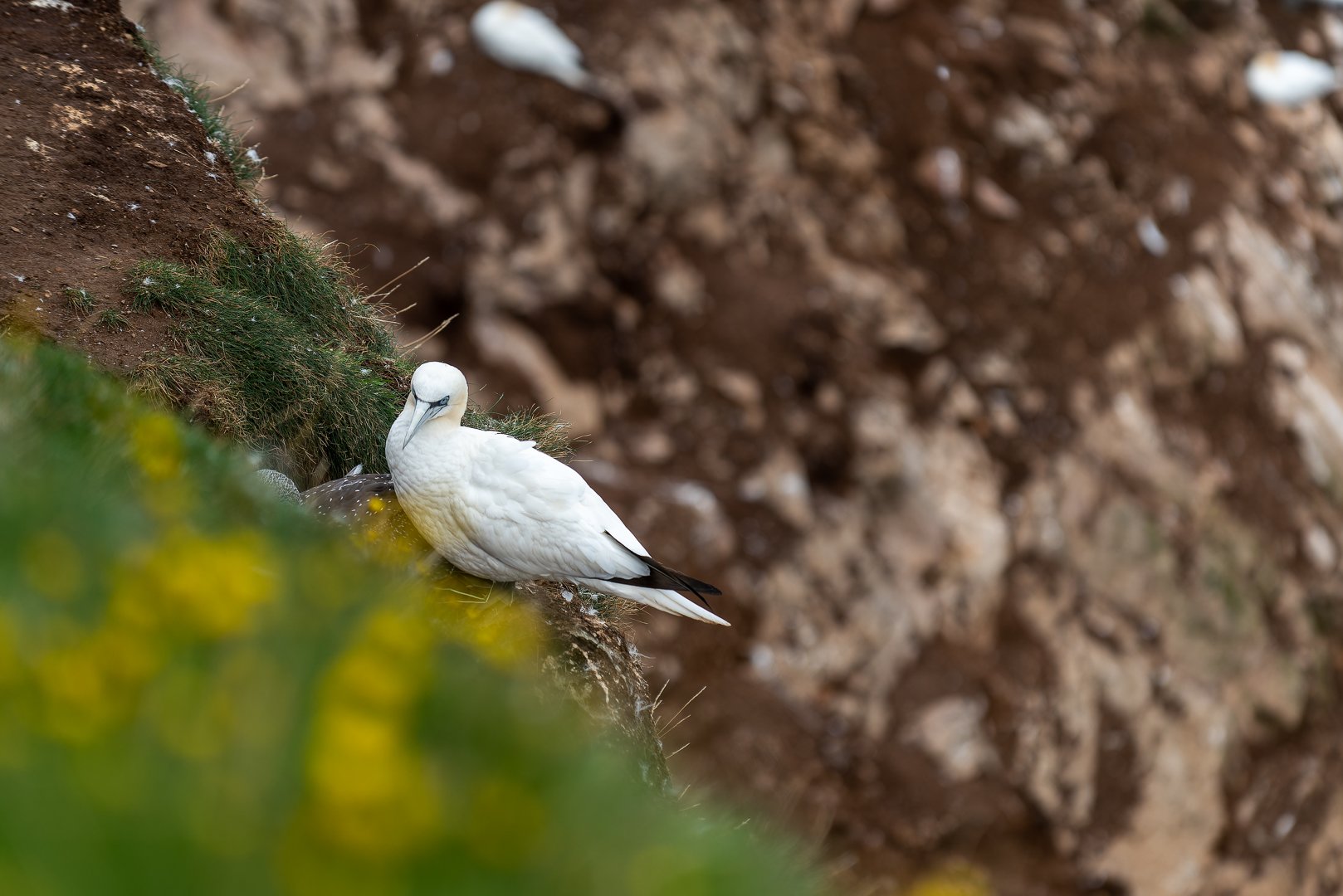A Gannet's Tale: Adventure, Connection, and the New Tamron 150-600mm Lens
On a Sunday August morning, under an overcast sky, I embarked on a remarkable photography adventure to capture the awe-inspiring gannets at Troup Head, Aberdeenshire. This outing held a special place in my heart for two distinct reasons: not only was I armed with my Nikon D850 and a new long lens, but my 8-year-old son stood beside me, his eyes gleaming with anticipation, ready to take his first steps into the world of bird photography.
Embracing the Beauty of Troup Head
Troup Head, with its breathtaking landscapes and the largest UK mainland gannet colony, was our destination. The rugged beauty of Aberdeenshire surrounded us as we explored the winding paths leading to the viewpoint. The coastal route offered us stunning vistas of the cliff edges and a glimpse of the charming village of Pennan. The alternate path, cutting through a farmer's field, provided a quicker way to our destination.
Nature's Dramatic Setting
As we arrived, the weather was a mix of rain clouds and clear skies—a dance of nature's elements. The north-west wind ushered in rain clouds from the sea. The wind played with the cliffs, providing the perfect backdrop for the gannets and fulmars gliding in the currents.
Capturing Moments Through the Lens
Armed with my Nikon D850 and my brand new Tamron 150-600mm f5-6.3 VC USD G2 lens, I was ready to capture the essence of these majestic creatures. The lens's versatility allowed me to zoom in and out, providing a dynamic perspective of the gannets in their habitat. As the gannets soared against the cliffs, the lens captured the intricate details of their plumage and the intensity in their eyes. The lens's sharpness ensured that every feather and every expression were rendered with precision.
Technical Wonders: Settings and Adaptability
The Tamron 150-600mm lens became a true ally in mastering the art of capturing gannets. With an aperture range of f5 to f6.3, I could adjust the depth of field to focus on my subjects against their backgrounds. The fast shutter speed of 1/2000th of a second froze the motion of the gannets in flight, revealing their grace and beauty. The lens's optical stabilisation system proved invaluable in maintaining sharpness, even in the face of the brisk winds.
Discovering the Gannets' Story
Beyond technicalities, this outing was a journey into the lives of gannets. Aberdeenshire serves as a vital migratory haven for these birds, and their arrival at Troup Head begins in late January. The cliffs witness a flurry of activity as gannets glide past, carrying nesting materials during April and May. Nesting gannets delicately guard their eggs laid around April or May, and their chicks hatch in mid-May, transforming the landscape into a nursery of white puffballs.
A Shared Joy: Photographing with my Son
As our time there started to run out and it was time to leave, the memories etched themselves deeply into our hearts. The true highlight of the day was witnessing my son's excitement as he captured his first-ever bird photographs. His enthusiasm mirrored my own, creating a connection between generations and a shared bond with nature. Together, we celebrated the simple joy of watching these magnificent creatures through the lens.
Embrace the Gannet's World: Plan Your Visit
For those eager to embrace the world of gannets, Troup Head offers a haven of natural wonders waiting to be explored. Early mornings and late evenings provide the best light for capturing these avian marvels. As the light paints the cliffs and the crowds thin, you can fully immerse yourself in this captivating spectacle.
Creating Memories That Last
As our first bird photography outing came to a close, I looked back on the day with a sense of fulfilment. What started as an endeavour to photograph gannets evolved into a journey of shared experiences. The images we captured, both through our cameras and in our hearts, serve as a timeless reminder of our connection to nature and to each other.
Links:
My Photographs
Tips and Advice
Bird Photography Tips: To capture stunning gannet shots, focus on framing and timing. Position yourself to catch their graceful flight and dramatic dives. Use burst mode to capture rapid movements and experiment with shutter speeds for dynamic shots. Patience is key; observe their behavior to anticipate actions. Utilise a zoom lens like the Tamron 150-600mm lens for detailed close-ups.
Preparation and Gear: Preparing for gannet photography involves packing essentials like spare batteries and memory cards. The Tamron 150-600mm lens proved invaluable, its versatile range capturing both close-up details and distant flight. A sturdy tripod stabilised long shots. Comfortable clothing and weather protection are crucial for outdoor shoots.
Impact of Conservation Efforts: Gannet colonies play a vital role in coastal ecosystems. Visiting sites like Troup Head supports conservation efforts by raising awareness and funds. These colonies contribute to biodiversity and marine health, highlighting the significance of protected spaces for seabird populations.
Post-Processing Techniques: Enhance gannet images with post-processing. Adjust contrast and saturation to bring out feather details and ocean hues. Use sharpening sparingly to maintain a natural look. Focus on composition and cropping to create visually appealing shots. Post-processing should enhance, not overshadow, the raw beauty of the scenes.
Local Wildlife and Nature: Troup Head isn't just about gannets; it hosts diverse wildlife and landscapes. Capture neighboring fulmars, kittiwakes, and panoramic sea views. Seals and dolphins might surprise you too. Troup Head's dynamic environment presents endless opportunities to document the rich coastal ecosystem.
Impacts of Changing Seasons: Troup Head's charm evolves with seasons. Spring witnesses gannets nesting, capturing tender moments. Summer brings fluffy chicks, showcasing nurturing behaviors. Autumn departure shows family bonds before migration. Exploring throughout the year offers diverse perspectives on gannet life cycles and their coastal habitat.
























